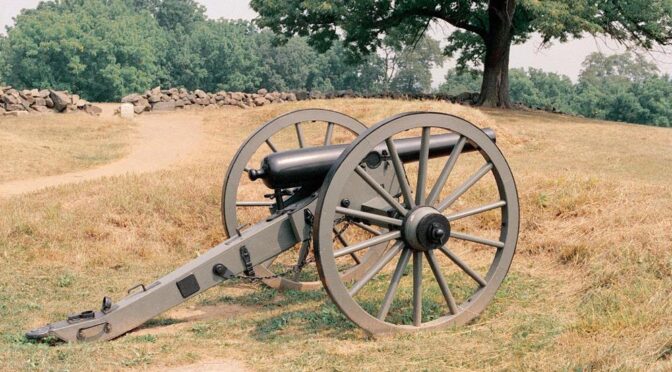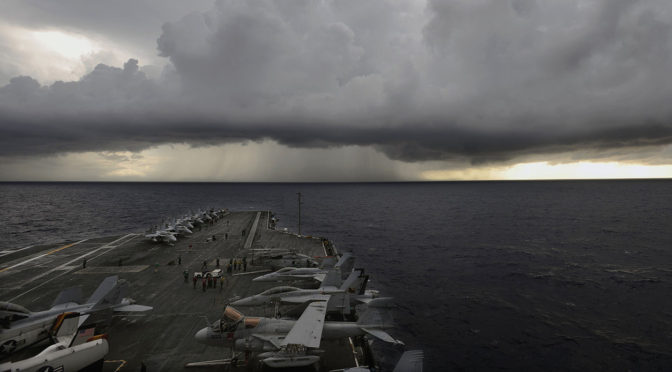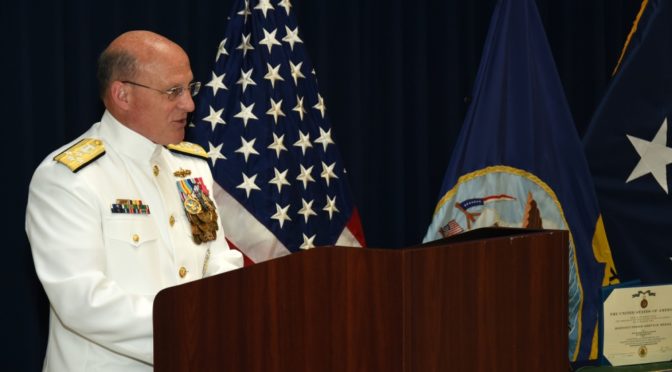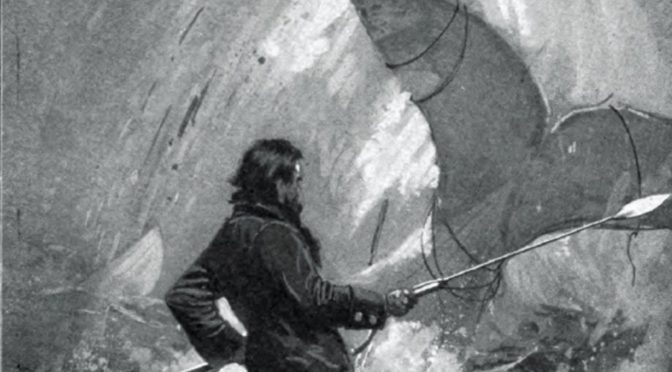By Bill Bray
I hold the view—perhaps a not very popular one today—that no professional U.S. mariner, civilian or military, can have a complete understanding of and appreciation for the American maritime experience who has not read—carefully read—at least some of Herman Melville’s seagoing work. As I will show, through his work, Melville was up to much more than churning out sea stories. But in producing great literature, no American writer did more to capture the culture and sweeping vistas of the young nation’s commercial and, to a lesser degree, naval ventures on the high seas. Reading Melville in the 1850s, or in the 1950s or today, for that matter, Americans learned for the first time what it meant to be a “Nantucketeer” in 1820.
Not one of my four children was required to read Herman Melville in high school. I had to read Billy Budd, Sailor, which was taught to me again plebe year at the Naval Academy. My father was a Herman Melville scholar, completing his dissertation on Melville’s use of imagery in his third book, Mardi (my father taught plebe English at the Naval Academy from 1968–1970). Published in 1849, Mardi revealed Melville as more than a writer of adventure tales, for which he achieved early success and fame. Mardi begins as another South Pacific adventure story, in similar fashion to his first two books, Typee and Omoo, but evolves into a metaphysical quest—a taste of things to come in Melville’s writing, for sure.
I had the good fortune as a boy, hardly appreciated at the time, to visit Melville’s western Massachusetts home (Arrowhead) with my father, as well as other Melvillian settings, such as New Bedford’s whaling museum. This legacy was my motivation to read Melville extensively in young adulthood. But for others in the Sea Services, the reasons your high school English teacher or college professor implored you to read Herman Melville—his unquestioned place near the top of the American canon, his profound insight into the soul of a troubled nation in mid-nineteenth century, his almost divine mastery of language—are reasons enough to dive into Melville’s world. And for current or aspiring naval leaders, there are additional reasons this great American author should maintain a prominent place on the bookshelf.
Melville in the Navy
Herman Melville briefly served in the U.S. Navy. He enlisted on 20 August 1843 from the Hawaiian port of Lahaina in Maui, where he had spent the previous three months working odd jobs after an adventurous two years in the South Pacific that included service on board three different whalers (Acushnet from January 1841 to July 1842 before deserting on the island of Nukuheva in the Marquesas; briefly on Lucy Ann in August 1842 where he participated in a mutiny and was subsequently jailed for a short time in British-controlled Tahiti; and on Charles & Henry from November 1842 to April 1843).1
In the Navy, Melville served as an ordinary seaman on the frigate USS United States from August 1843 until October 1844, where he was discharged in Boston following service in the South Pacific and South Atlantic. Melville’s naval service is the basis of his book White-Jacket (1850) and provided him material for the writing of Billy Budd nearly forty years later. In fact, Melville devoted Billy Budd to Jack Chase, the real-life captain of the maintop on the United States with whom he formed a deep friendship. Chase was an avid reader of the classics, and they had long talks about literature while standing watches in the maintop.2
Melville is not the only accomplished American writer to have served in the Navy, but he is the greatest. He shares company with writers such as Walt Whitman, Nathaniel Hawthorne, and Mark Twain, who established a distinctly American voice in literature. Melville’s naval service is not the sole reason for American maritime professionals to read his major works, let alone his entire oeuvre, but it should at least spark an interest.
Melville Was Quite Progressive for His Day
Melville challenged conventional 19th century views on race, class, and what it meant to be ‘civilized’ (gender is the one subject that does not feature in his work). Typee (1846) is a fictional account of his desertion in the Marquesas during which he spent weeks living among the natives of the Typee Valley. It was a significant commercial success, as readers were fascinated with this story of two young, innocent American sailors discovering a lush carnal paradise that is as dangerous as it is alluring.
Typee should not be read solely as adventure story, however. It is a subtle commentary too on the sins of antebellum America. Though scholarly research has shown that Melville’s account of the Typee Valley was heavily embellished to present a more romantic ideal of the untainted, “precivilized” world, Typee nevertheless reveals a young writer’s enlightened sensitivity to society’s capacity to corrupt as well as refine. By 1850, Melville would be a “reformed, if not repentant, romantic, who saw the fragility as well as the deformity of culture.”3
The year 1850 was a momentous one for Melville. His discovery of Shakespeare in the late 1840s and newfound friendship with his western Massachusetts neighbor Nathaniel Hawthorne were seminal events that accelerated his evolution from popular to more serious writer. By the summer, he had finished a draft of a whaling novel (a manuscript that did not include the character Ahab), but his admiration for Hawthorne’s daring exploration of dark, controversial themes inspired a feverish rewrite of Moby-Dick in the winter and spring of 1850–1851.4
Early in Moby-Dick, in the chapter titled “The Spouter Inn,” Melville’s narrator Ishmael learns he must share a boarding room in New Bedford with a harpooner. He is initially terrified to learn the harpooner is a “savage” with the strangest customs. Yet in a few short paragraphs after Ishmael and Queequeg meet, Melville has Ishmael shed his prejudice to see Queequeg’s humanity. And this is not a journey, Melville makes clear, that Ishmael would have made from listening only to Christian homilies of that day. He needed direct interaction with the strange foreigner. “I stood looking at him a moment,” says Ishmael after realizing Queequeg is at once kind and harmless. “What’s all this fuss I have been making about, thought I to myself—the man’s a human being just as I am: he has just as much reason to fear me, as I have to be afraid of him. Better sleep with a sober cannibal than a drunken Christian.”5
Moby-Dick is much more than social criticism, however. It is a remarkable existential exploration. In Melville’s lifetime, Moby-Dick was a failed experiment in writing, too modern for the readers of his day. By the time of his death in 1891, only 3,715 copies had sold, compared with 16,320 copies of Typee.6 It would not be recognized more widely as a great novel for nearly seventy years.
An American naval officer, or any American embarking on a professional sea-going life, should read it and reread it. It is Melville at the height of his powers, and among its many wonders are some of the richest descriptions of sea-going life during an age when a young maritime nation, the United States, was just feeling out its newfound place in the world. Those that never take up the challenge of reading it are resigned to a certain impoverishment in connecting to their own maritime past and profession.
Nathaniel Philbrick, author of In the Heart of the Sea and other maritime histories, claims to have read Moby-Dick at least twelve times. In 2011, Philbrick published Why Read Moby-Dick?, a short but persuasive case for reading the classic, a case made far better than I ever could. Philbrick writes that Moby-Dick is “a novel about a whaling voyage in the Pacific that is also about America racing hell-bent toward the Civil War and so much more. Contained in the pages of Moby-Dick is nothing less than the genetic code of America: all the promises, problems, conflicts, and ideals that contributed to the outbreak of a revolution in 1775 and a civil war in 1861.”7
Stung by the failure of his epic, Melville turned to serial publication in the mid-1850s and produced some of the greatest short fiction in American literature. Four years after Moby-Dick, Melville in 1855 published the novella Benito Cereno in three installments in Putnam’s Monthly, which would later be included in the The Piazza Tales (1856).
In his copy of Ralph Waldo Emerson’s 1841 essay Prudence, next to the famous line “trust men, and they will be true to you; treat them greatly and they will show themselves great,” Melville had written in the margin, “God help the poor fellow who squares his life according to this.”8 Melville’s narrator in Benito Cereno, the optimistic and naïve American merchant captain Amasa Delano, is that poor fellow. Melville, in a mere 85 pages, uses the nightmare of the American slavery experience to not only continue his metaphysical inquiry into man’s nature, but to also quite presciently predict the coming reckoning. Set in 1799 and based closely on the real-life Amasa Delano’s journal description of a similar experience in 1805, the story is a masterful study in hubristic self-deception, where a man (or a society) so convinced of his own righteousness and benevolence, is incapable of seeing the world as it actually is, indeed the very horror at the heart of what is considered “civilization.”
While anchored near Santa Maria island off Chile, Delano wakes one morning to discover the Spanish merchant San Dominick limping into the natural harbor. Eager to help a fellow mariner, he embarks San Dominick to offer assistance to its captain, Benito Cereno. San Dominick is an African slaver and in terrible condition. Cereno explains he has already lost many crew and passengers to fierce weather and illness. What Delano eventually discovers, however, is that the story about storm and sickness is a cover. San Dominick is experiencing a slave mutiny, and its captain is a prisoner. What Delano could not initially see is the same thing much of America of 1855 could not see: it was a prisoner to the institutional evil of slavery, and that bondage was hurling it towards a most violent cataclysm that could doom the great democratic experiment.
Reading Benito Cereno, particularly for the second or third time, one cannot help wondering why Delano did not more rapidly discern the clues before him. Delano is not unobservant, and throughout the story he senses something is seriously amiss aboard San Dominick. At several points Delano fears Cereno is really a pirate luring him into a well-laid trap to rob his ship (the Bachelor’s Delight). But Delano, ever the optimist, repeatedly dismisses his own suspicions. “…[E]xerting his good nature to the utmost, insensibly he came to a compromise. ‘Yes, this is a strange craft; a strange history, too and strange folks onboard. But – nothing more.’”9 Like his native America, Delano could not see the very horror before him.
The problem of race still haunts American society. While one need not completely embrace Melville’s pessimism, anyone in today’s Navy would be well to continually question whether they really see things as they are, or only as they think them to be—or wish them to be. Melville says of Amasa Delano’s optimism about human nature: “Whether, in view of what humanity is capable, such a trait implies, along with a benevolent heart, more than ordinary quickness and accuracy of intellectual perception, may be left to the wise to determine.”10 The wise would actually not determine it so, according to Melville. And that skepticism may be just enough to save us from the insanity of believing Emerson’s claim.
The Relationship Between Captain and Crew
The scholar Maxwell Geismar astutely observed that Herman Melville was a “pre-Freudian depth psychologist of fantastic proportions.” This is supported in Melville’s writings in many places and many ways, including in his portrayals of the relationship between captain and crew on a ship at sea. Melville has a keen, penetrating eye for the complex psychological forces at work in this relationship. For one aspiring to command a ship or serve in any high leadership post, a close reading of these depictions provides a useful complement to any formal training on the subject of command.
Ahab is, of course, the most famous American fictional ship captain. Long before Captain Queeg in The Caine Mutiny, American literature had its mad commanding officer, a monomaniac sick with an irrational thirst for revenge against an animal. His crew is merely a vehicle to help him achieve it, its safety be damned. But Ahab cannot be understood so simplistically. Melville carefully constructs a more complex character, one that demands some measure of sympathy as well. Ahab is both a victim of a cruel unfeeling world, and its malevolent agent, and we are ceaselessly challenged to sort out one aspect of him from the other. The first mate, Starbuck, suspects Ahab’s obsession foretells danger, but is just as conflicted. After protesting early in the voyage (“but I came here to hunt whales, not my commander’s vengeance”) he cannot press his case any further and openly oppose his captain.11
Ahab’s psychological hold on the crew is nearly hypnotic. He does not appear in Moby-Dick until the 28th chapter, but we have sensed his presence long before that. He is the crew’s “supreme lord and dictator.”12 He understands what motivates them better than they understand themselves. Chapter 36, “The Quarter-Deck,” has Ahab reveal to the crew the true purpose of the voyage—to kill the white whale and gain for Ahab some measure of justice. The commercial bottom line of a whaling voyage is a distant secondary objective. At this moment in the story, Ahab recognizes that only Starbuck can thwart his design. He takes his case straight to the crew in Starbuck’s presence, understanding better than his first mate that his men are driven by far more than the prospect of financial gain. They are romantic adventurers who yearn for glory and prestige and greatness, easy prey to enlist in his unholy cause.
For aspiring merchant ship masters, commanding officers, and command master chiefs, at the very least chapter 36 should be required reading. It is a brilliant fictional depiction of how a captain’s almost irresistible, if brooding, charisma can bewitch a crew into a dangerously blind obedience. Crew morale is always critically important, but it can also be manipulated to serve corrupt ends.
Toward the end of the novel before the final, catastrophic chase, in chapter 123 entitled “The Musket,” the Pequod has just ridden out a typhoon south of Japan. Starbuck goes below to Ahab’s cabin to report a fair wind. Ahab is fast asleep, and as Starbuck approaches he eyes Ahab’s loaded muskets in a rack. “Starbuck was an honest, upright man; but out of Starbuck’s heart, at that instant when he saw the muskets, there strangely evolved an evil thought . . .”13 In the ensuing Shakespearean soliloquy—and again, one cannot overstate Shakespeare’s influence on Melville—Starbuck struggles with the thought of assassinating Ahab to save the crew and himself (“Starbuck seemed wrestling with an angel”).14 Having picked up one of the muskets to see if it was loaded, at the close of this magnificent scene he puts it back in the rack. He cannot take up against his captain. Even when convinced Ahab is leading the crew to catastrophe, Starbuck cannot bring himself to betray a sacred respect for a captain’s authority.
The other most recognizable depiction of the captain-crew relationship is the heart of the novella Billy Budd, Sailor, a story Melville wrote in the late 1880s near the end of his life and based, in part, on the 1842 USS Somers incident (Melville’s last work of prose was not discovered until the 1920s, more than 30 years after his death). British warship Captain Edward Fairfax Vere is an entirely different creation than Ahab, but no less instructive for today’s maritime professional. If Ahab is charismatic and irrational, Vere prides himself as a calm man of reason. We learn that while at sea Vere spends a great deal of time reading, mostly authors who “like Montaigne, honestly and in the spirit of common sense philosophize upon realities.”15 In Vere, Melville is satirizing the propensity for many leading 19th century thinkers to believe (or hope, as the case may be) that the rational, scientific approach can fully explain and temper human nature. Like Dostoevsky (perhaps the ultimate 19th century rebel against the pretensions of ‘the rational man’), Melville had seen too much of man’s depravity and cruelty to not find such unquestioning faith in science utterly ridiculous.
John Claggart, Master-at-Arms of HMS Indomitable, is the obvious villain of Billy Budd, intent on destroying the innocent, Christ-like sailor impressed from merchant service.16 But it is Vere who should really be feared. With Claggart, we get evil as clear as day. With Vere, we get something even more dangerous and consequential. Vere knows Budd is innocent and Claggart is lying, yet he allows Budd to hang. Vere is not a bad man. He is torn between a fatherly love of Billy and what he views as his duty. But ironically the calm man of reason ultimately rejects putting Budd’s case to a more thorough, rational legal investigation ashore. Instead, he quickly succumbs to his panicky fears of mutiny. As it turns out, it is a short journey for Vere to rationalize the execution of an innocent man—it is legal, therefore justifiable. Geismar notes that “Melville hated most those rationalists, noble or criminal, who had repressed their own moving emotions and hence were unaware of them. Those are the true madmen, who give every appearance of decency, respectability, sobriety, ‘calm judgment’, and, in Vere’s case, of the class, property, and position to which Claggart aspired.”17
Under pressure, leaders can rationalize doing the wrong thing. Leadership positions, particularly something as daunting as command at sea, inevitably place their inhabitants in the crucible. Therefore, when reading Billy Budd, the maritime leader should be wary to not quickly dismiss Vere as weak or corrupt. Be careful, Melville seems to warn, there are Veres everywhere, and one of them could be you. Literature will never give a discrete answer as to how leaders should act in every situation, but it can help them think about their own vulnerabilities.
An Abiding Prophet
In his lifetime, Herman Melville published prose fiction in a short, 11-year period, from 1846–1857. By the 1860s he was already passing into obscurity. One can only imagine what the ensuing decades were like for him, working at the U.S. Customs House in New York City trying to make ends meet. It would be three decades after his death in 1891 before his writing would begin to be recognized for what it is—a great literature that remains important for all readers today, but especially for those who aspire to careers in a maritime service. While exploring the deepest mysteries of human nature, Melville forged a lasting bond between America’s maritime tradition and our enduring quest for answers to the hardest challenges of Sea Service leadership.
Bill Bray is a retired U.S. Navy captain and the deputy editor-in-chief of the U.S. Naval Institute’s Proceedings magazine. An earlier version of his essay was published in Proceedings in February 2017.
Endnotes
1 Andrew Delbanco, Melville: His World and Work (New York: Random House, 2005), 41–50.
2 Delbanco, 60.
3 Delbanco, 312.
4 Nathaniel Philbrick, Why Read Moby-Dick? (New York: Penguin, 2011), 43.
5 Herman Melville, Moby Dick (New York: Penguin, 2006), 26.
6 Philbrick, 6.
7 Philbrick, 6.
8 Robert Hendrickson, American Literary Anecdotes (New York: Penguin, 1990), 155.
9 Herman Melville, Benito Cereno (Norwalk, CT: Easton Press, 2004), 129.
10 Melville, Benito Cereno, 91–92.
11 Melville, Moby-Dick, 176.
12 Melville, Moby-Dick, 133.
13 Melville, Moby-Dick, 558.
14 Melville, Moby-Dick, 560.
15 Herman Melville, Billy Budd, Sailor (Norwalk, CT: Easton Press, 2004), 23.
16 HMS Indomitable was the name Melville originally gave the British ship in Billy Budd. In later drafts he changed it to HMS Bellipotent. The Easton edition is based on Elizabeth Treeman’s re-re-edited version. The discovery of the Billy Budd manuscript and its subsequent editing history is a fascinating story in itself.
17 Maxwell Geismar, Introduction to Billy Budd (Norwalk, CT: Easton Press, 2004), xiii.
FEATURED IMAGE: An illustration from the 1902 Charles Scribner’s Sons edition of Moby-Dick depicting the final chase of the whale. Reproduced from Wikimedia Commons.




